
Annenkov's Regular Cavalry
Two regular cavalry units were at the core of Annenkov's Partisan Division – the Black Hussars and the Blue Lancers.
Uniform schemes for these units are also shown at kolchakiya.ru.
Black Hussar Regiment
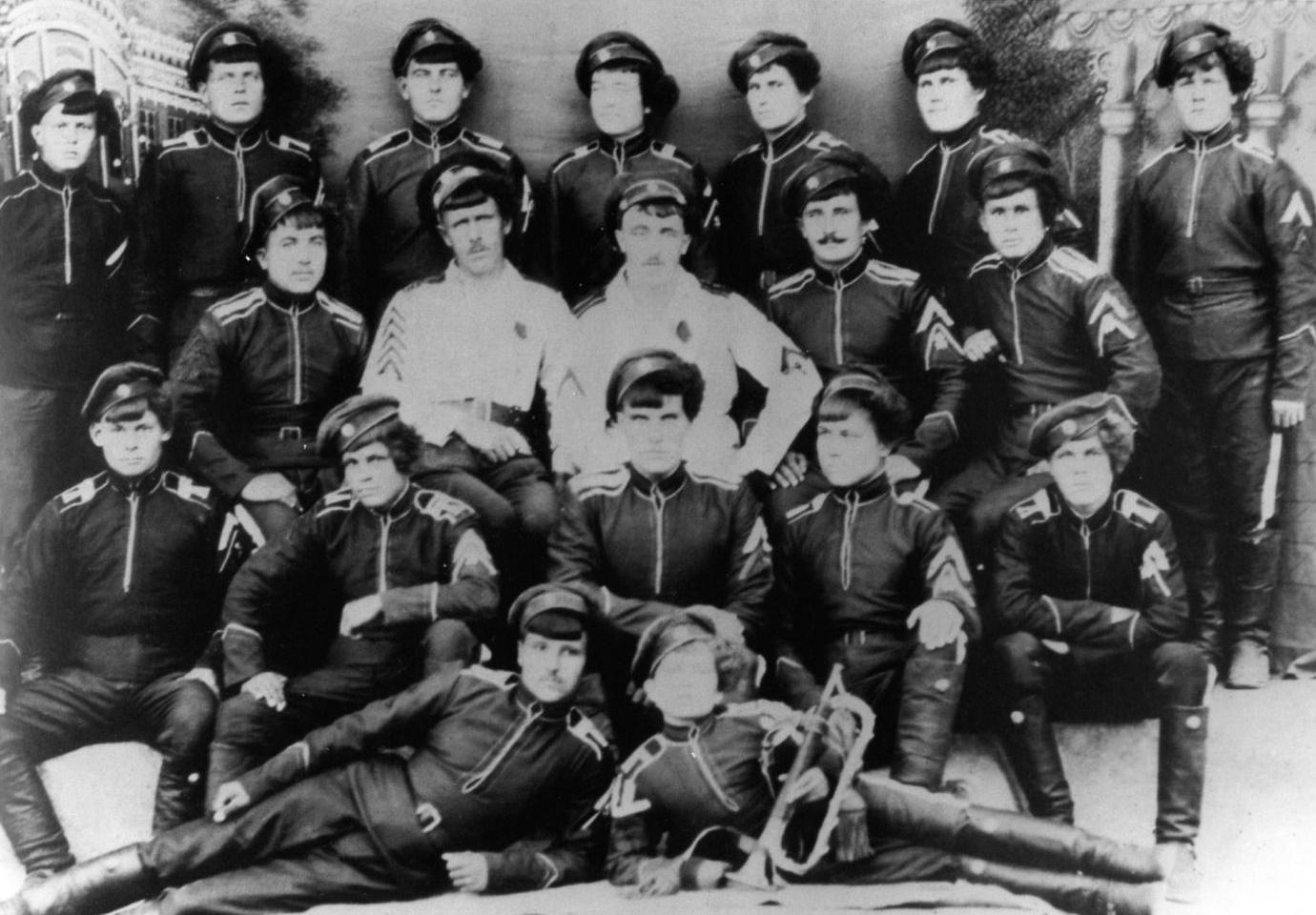
The Black Hussars formed quite early, and remained a key unit in Annenkov's Partisan Division. In July 1919 they numbered 27 officers and 700 sabres.
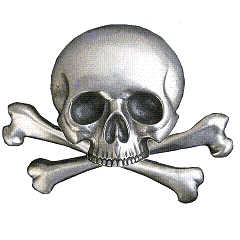 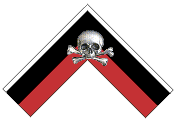 |
 |
|---|---|
| Cockade and chevron reconstructions | Flag |
We have not attempted a uniform scheme as the ones at kolchakiya.ru combined with period photos are more than adequate.
Deryabin's plate VIII in his White Army book also shows the unit, but with red shoulderboards. If this was true, then by normal Imperial policy the cap band would also be red piped white to match. On balance we feel that shoulderboards were probably black.
Some photos show senior officers in white jackets, and others seem to have added traditional hussar piping, especially to trousers. This is likely staff officers in dress uniform, rather than operational wear.

A period photo of the hussars is shown to the left
Note:
1) how immaculate the men are in both pictures, especially in contrast to most Civil War units.
2) the men wear their caps Cossack style, suggesting their origins.
3) even the horses were also deliberately black in this unit (except for the standard bearer obviously).
Blue Lancer Regiment
Often refered to as the "Blue Ulans".
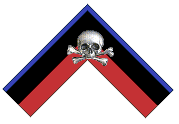 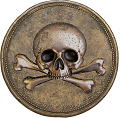 |
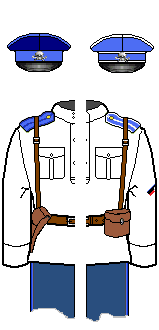 |
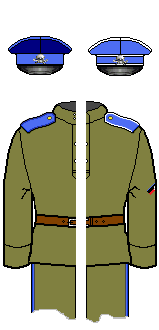 |
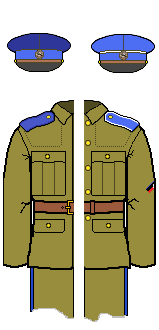 |
|---|---|---|---|
| Chevron and cockade reconstruction | Officer two variations | Trooper guesses in Japanese cloth uniform | Trooper guesses in British uniform |
By the time Annenkov arrived in the Semirechye the Blue Lancer Regiment is alread in his order of battle. It is sometimes referred to as the Barnaul Regiment, and was perhaps recruited there. In July 1919 it numbered 22 officers and 707 sabres. Given where he was recruiting, the only way Annenkov could get a large lancer unit together so quickly was to recruit Cossacks. So it may have been called "Lancer" but it was almost certainly Cossack in manpower.
This regiment served quite a lot of the time separate from the rest of the Division, often split into separate squadrons. It found itself isolated to the north when Kolchak's front collapsed in late 1919 and ended up retreating eastwards, rather than south towards the main body of the Partisan Division. It then disappears, with a suggestion that it went to northwestern China.
The uniform is unknown and the above schemes are a guess. There is another speculative version at kolchakiya.ru, but there are serious issues with it. We have chosen hats that are the colours of the Orenburg Cossacks, and so available at the time the regiment was formed (left-hand caps above) rather than just plain blue (right-hand caps).
In Tsarist uniforms there was a pattern for regimental colours: the main colour of the cap band was also the main colour of the shoulderboard and the colour of the trouser stripe. The cap colour was the colour of the shoulderboard piping. If Orenburg caps were used the pattern would suggest that the shoulderboards would be blue, piped in dark blue (left). If there was actually white piping on blue shoulderboards, then it would suggest at the very least that the cap band would also be piped white (right), if not the entire cap in white.
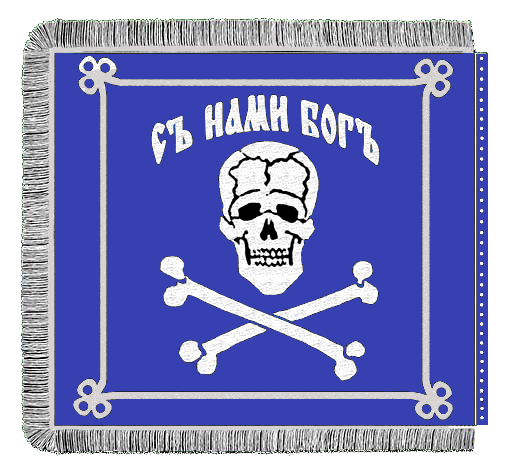
Such fancy uniforms would be hard to find, and it was not unusual for men to resort to painting caps to get them to match. The rightmost uniform scheme above assumes painted British caps.
Some sources give the banner of the blue ulans as shown to the right.
Other Regular Cavlary
There was a Reserve Regiment during much of 1919. Its facings were red.
For a while there was a Separate Cavalry Squadron. Its facings were black.
With Hussar, Lancer, Native and Cossack regiments, what Annenkov was missing was Cuirassier and Dragoons for the full set. Sure enough towards the end of 1919 a Cuirassier Regiment and a Dragoon Regiment appear in the order of battle. Presumably they were deserters (to be generous, early refugees!) from Kolchak's forces – who were initially at least badly affected with typhus and unable to form operational units for some time. Information about them or their uniforms has not been found by us, but they made it across to China at any rate.